2020 Kawasaki ZX6R and ZX6R KRT Edition
Contents
The 2020 Kawasaki ZX6R comes from a long line of successful supersport motorcycles that were introduced to the world in 1995. 11 generations of engineering and evolution have led to the ZX6R having a 636 cc inline 4 engine that produces 127 crank HP and 52 lbs-ft of crank torque. As well, a slightly modified digital fuel injection system sees the model meet both the Euro 4 and Euro 5 emissions regulations.
The ZX6R, like its predecessors, is known for sharp and angular styling as well as highly responsive handling. This continues in 2020 with only minor aesthetic tweaks, otherwise keeping the ABS, traction control, multifunction LCD, suspension geometry, and World SBK derived aluminum frame from the 2019 model year. The KRT Edition, much like the ZX10R KRT, is different only in that it replaces the standard fairings with ones painted in the Kawasaki Racing Team colors with appropriate decals as well.
The 2020 Kawasaki ZX6R starts at $9,999 US/$11,999 CA and the 2020 Kawasaki ZX6R KRT Edition starts at $11,299 US/$13,299 CA
On this page: we’ve curated specs, features, news, photos/videos, etc. so you can read up on the new Kawasaki Ninja ZX6R in one place.
Model Overview
General Info
- Price: $9,999 US/$11,999 CA
- Key Features:
- Abs (Anti-lock Brake System)
- TRaction Control
- LED Lighting
Key Specs
- Engine type: 636cc, 4-stroke, 4-cylinder
- Power: 127 Hp
- Wet weight: 430 lb
- Seat height: 32.7 in
Key Competitors
2020 Kawasaki Ninja ZX6R Specifications
ENGINE |
||
| Engine | 636cc, 4-stroke, 4-cylinder, DOHC, 16-valve, liquid-cooled | |
| Power | 127 Hp | |
| Bore x Stroke | 67.0mm x 45.1mm | |
| Compression Ratio |
12.9:1
|
|
| Fuel System | DFI® with 38mm Keihin throttle bodies (4) and oval sub-throttles | |
| Starter | Electric | |
| Lubrication | Forced lubrication, wet sump with oil cooler | |
DRIVETRAIN |
||
| Clutch | Wet multi-disc, manual | |
| Transmission | 6-speed, return, return shift | |
| Final Drive | Sealed chain | |
CHASSIS |
||
| Suspension Front | 41mm inverted Showa SFF-BP fork with top-out springs, stepless compression and rebound damping, adjustable spring preload/4.7 in | |
| Suspension Rear | Bottom-link Uni-Trak® with gas-charged shock, stepless compression damping adjustment, 25-way adjustable rebound damping, fully adjustable spring preload/5.9 in | |
| Brakes Front | Dual 310mm petal discs with dual radial-mounted Nissin 4-piston monobloc calipers and KIBS ABS | |
| Brakes Rear |
Single 220mm petal discs with single-piston caliper and KIBS ABS
|
|
| Tires Front | 120/70 ZR17 | |
| Tires Rear | 180/55 ZR17 | |
| Fuel Tank Capacity | 17 L (4.5 US gal.) | |
| Color |
Candy Steel Furnace Orange/Metallic Flat Spark Black, Metallic Spark Black/Metallic Flat Spark Black
|
|
ELECTRICAL |
||
| Ignition | TCBI with digital advance | |
| Spark Plugs | ||
| Headlight | LED | |
| Tail Light | LED | |
DIMENSIONS |
||
| Overall Length | 79.7 in (2,024 mm) | |
| Overall Width | 28 in (711 mm) | |
| Overall Height | 43.3 in (1,100 mm) | |
| Wheelbase | 55.1 in (1,400 mm) | |
| Ground Clearance | 5.1 in (130 mm) | |
| Seat Height | 32.7 in (830 mm) | |
| Curb Weight | 430 lbs (295 kg) | |
WARRANTY |
||
| Warranty | 12 Month Limited Warranty | |
| Extension | ||
2020 Kawasaki Ninja ZX6R Features
Assist & Slipper Clutch
Based on feedback from racing activities, the Assist & Slipper Clutch uses two types of cams (an assist cam and a slipper cam) to either drive the clutch hub and operating plate together or apart.
Under normal operation, the assist cam functions as a self-servo mechanism, pulling the clutch hub and operating plate together to compress the clutch plates. This allows the total clutch spring load to be reduced, resulting in a lighter clutch lever feel when operating the clutch.
When excessive engine braking occurs – as a result of quick downshifts (or an accidental downshift) – the slipper cam comes into play, forcing the clutch hub and operating plate apart. This relieves pressure on the clutch plates to reduce back-torque and helps prevent the rear tire from hopping and skidding. This race-style function is particularly useful when sport or track riding.
Economical Riding Indicator
Using high-precision electronic control for engine management, Kawasaki models can achieve a high level of fuel efficiency. However, fuel consumption is greatly affected by throttle use, gear selection, and other elements under the rider’s control. The Economical Riding Indicator is a function that indicates when current riding conditions are consuming a low amount of fuel. The system continuously monitors fuel consumption, regardless of vehicle speed, engine speed, throttle position and other riding conditions. When fuel consumption is low for a given speed (i.e. fuel efficiency is high), an “ECO” mark appears on the instrument panel’s LCD screen. By riding so that the “ECO” mark remains on, fuel consumption can be reduced.
While effective vehicle speed and engine speed may vary by model, paying attention to conditions that cause the “ECO” mark to appear can help riders improve their fuel efficiency – a handy way to increase cruising range. Further, keeping fuel consumption low also helps minimize negative impact on the environment.
Dual Throttle Valves
Late-model sport bikes often use large-bore throttle bodies to generate high levels of power. However, with large diameter throttles, when a rider suddenly opens the throttle, the unrestricted torque response can be strong. Dual throttle valve technology was designed to tame engine response while contributing to performance.
On models with dual throttle valves, there are two throttle valves per cylinder: in addition to the main valves, which are physically linked to the throttle grip and controlled by the rider, a second set of valves, opened and closed by the ECU, precisely regulates intake airflow to ensure a natural, linear response. With the air passing through the throttle bodies becoming smoother, combustion efficiency is improved and power is increased.
KQS (Kawasaki Quick Shifter)
Designed to help riders maximize their acceleration on the track by enabling clutchless upshifts with the throttle fully open, KQS detects that the shift lever has been actuated and sends a signal to the ECU to cut ignition so that the next gear can be engaged without having to use the clutch. On models that offer clutchless downshifts, during deceleration the system automatically controls engine speed so that the next lower gear can be selected without operating the clutch.
KTRC (Kawasaki TRaction Control)
KTRC, Kawasaki’s advanced traction control system provides both enhanced sport riding performance and the peace of mind to negotiate slippery surfaces with confidence. Multiple rider-selectable modes (the number of modes varies by model) offer progressively greater levels of intrusion to suit the riding situation and rider preference.
Less intrusive modes maintain optimum traction during cornering. Designed with sport riding in mind, they facilitate acceleration out of corners by maximizing forward drive from the rear wheel. And because Kawasaki’s sophisticated software bases its dynamic analysis on the chassis’ orientation relative to the track surface (rather than relative to a horizontal plane), it is able to take into account corner camber, gradient, etc., and adapt accordingly.
In the more intrusive modes (and for some models, in any mode), when excessive wheel spin is detected, engine output is reduced to allow grip to be regained, effectively enabling riders to negotiate both short, slippery patches (train tracks or manhole covers) and extended stretches of bad roads (wet pavement, cobblestone, gravel) with confidence.
Models equipped with IMU incorporate chassis-orientation feedback to offer even more precise management.
Power Modes
Models equipped with multiple Power Modes offer riders an easily selectable choice of engine power delivery to suit riding conditions or preference. In addition to Full Power mode, one (Low) or two (Middle, Low) alternate mode(s) in which maximum power is limited and throttle response is milder are provided.
ABS (Anti-lock Brake System)
Kawasaki ABS systems use front and rear wheel sensors to constantly monitor wheel speed. Should information from either of the sensors indicate that wheel lock has occurred, the ABS ECU directs the pump in the ABS unit to modulate brake fluid pressure (releasing and reapplying pressure so that traction can be regained) until normal operation resumes. ABS offers rider reassurance that contributes to greater riding enjoyment.
KIBS (Kawasaki Intelligent anti-lock Brake System)
Kawasaki developed KIBS to take into account the particular handling characteristics of supersport motorcycles, ensuring highly efficient braking with minimal intrusion during sport riding. It is the first mass-production brake system to link the ABS ECU (Electronic Control Unit) and engine ECU.
In addition to front and rear wheel speed, KIBS monitors front brake caliper hydraulic pressure, throttle position, engine speed, clutch actuation and gear position. This diverse information is analyzed to determine the ideal front brake hydraulic pressure. Through precise control, hydraulic pressure is modulated in much smaller increments than with standard ABS systems. The system limits rear wheel lift under heavy braking and takes downshifting into account while braking, allowing the rider to manage the rear brake. And because of the finer control, kickback to the brake lever is minimal, resulting in a very natural feeling.
2020 Kawasaki Ninja ZX6R Photos
2020 Kawasaki Ninja ZX6R Videos
Links
Kawasaki Official Websites

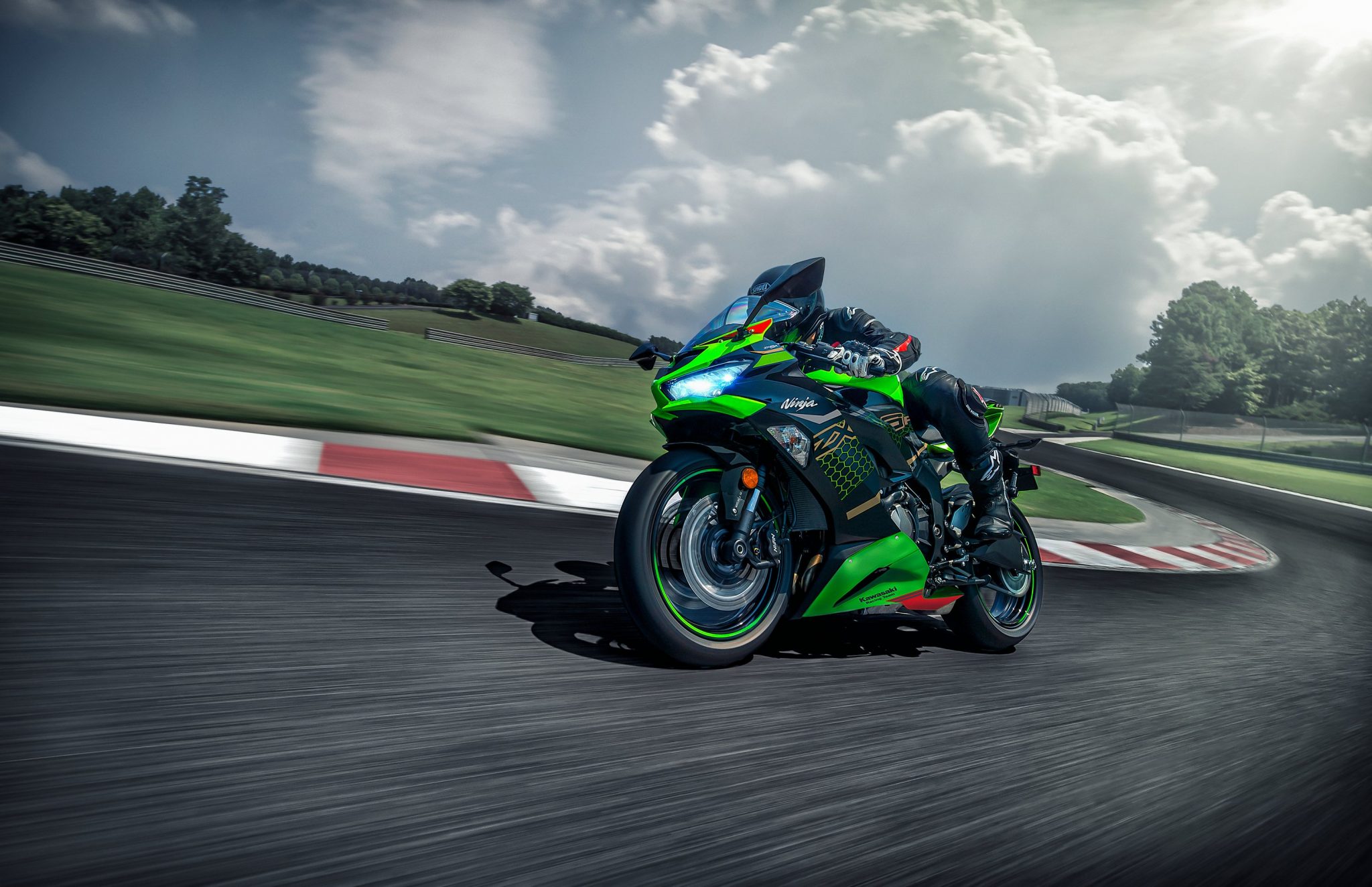

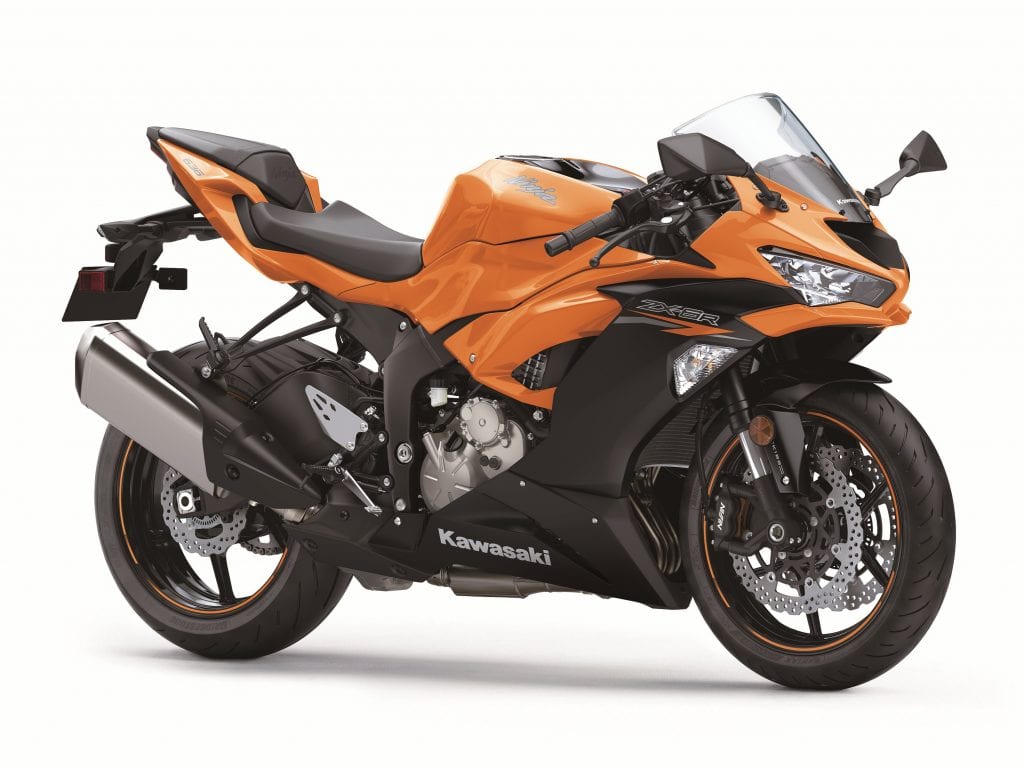
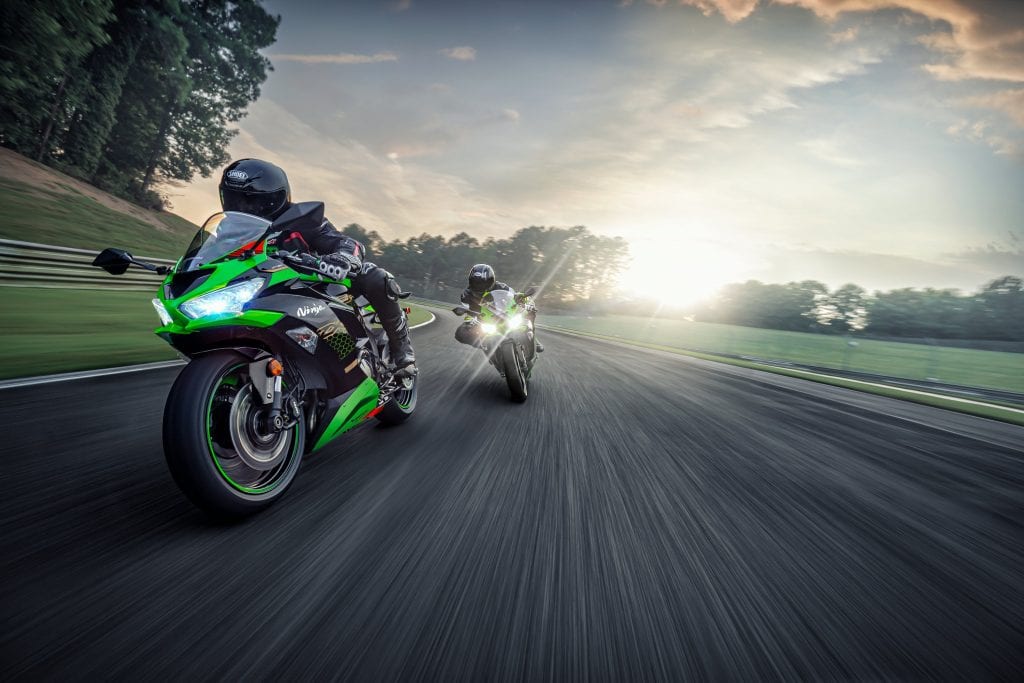
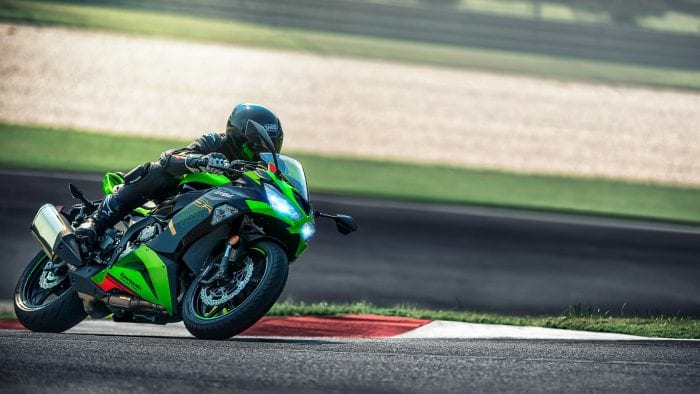
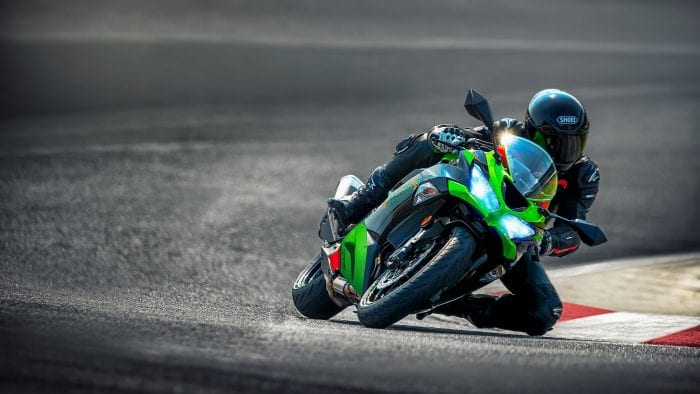

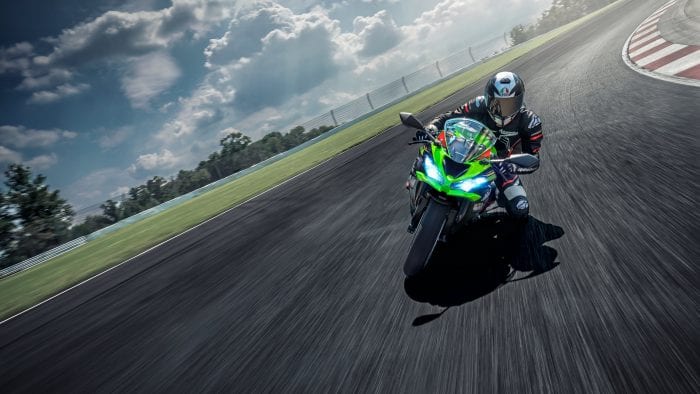
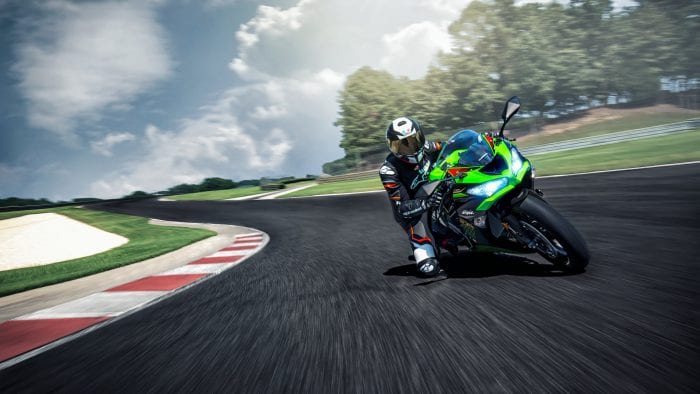
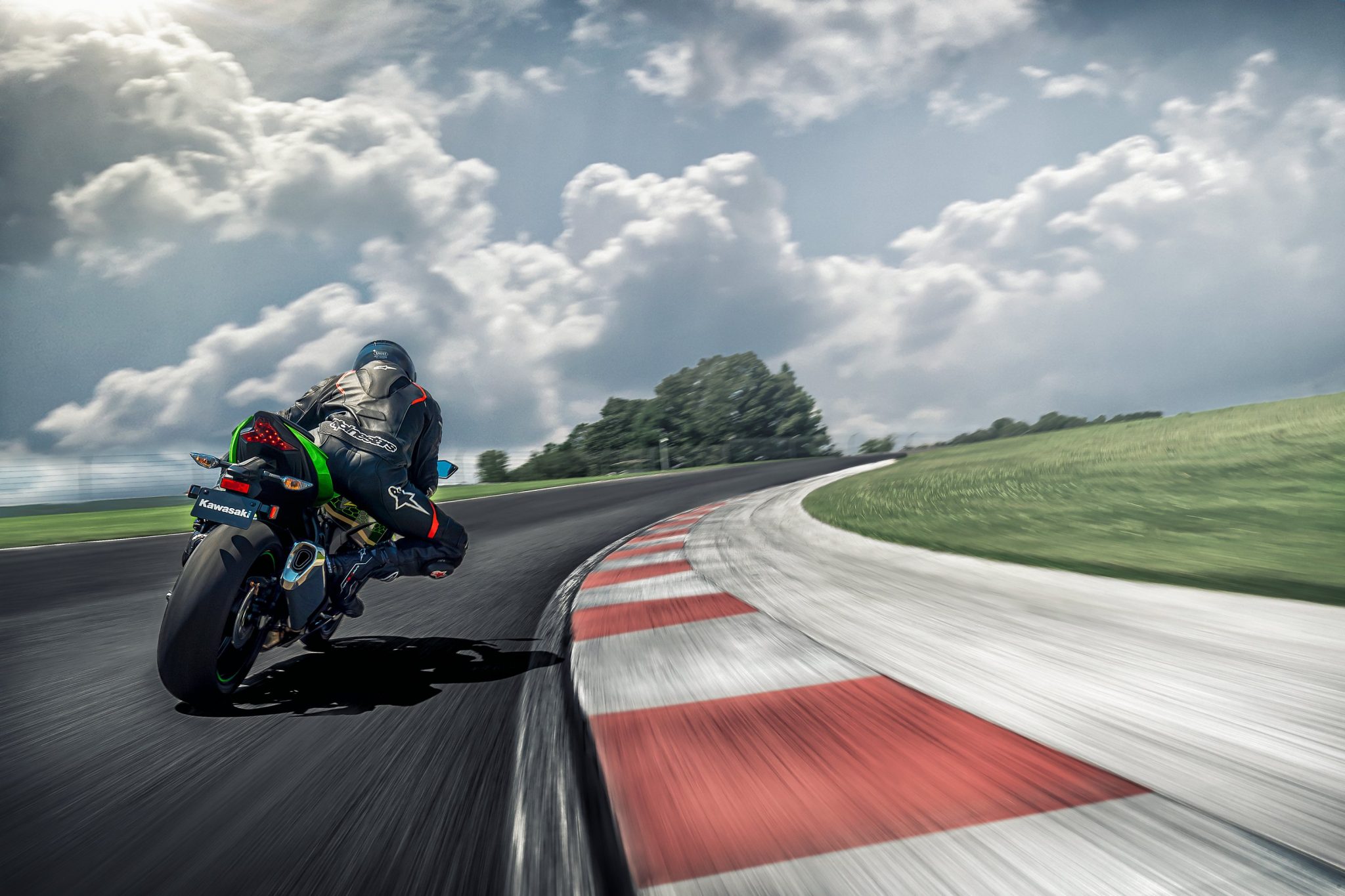
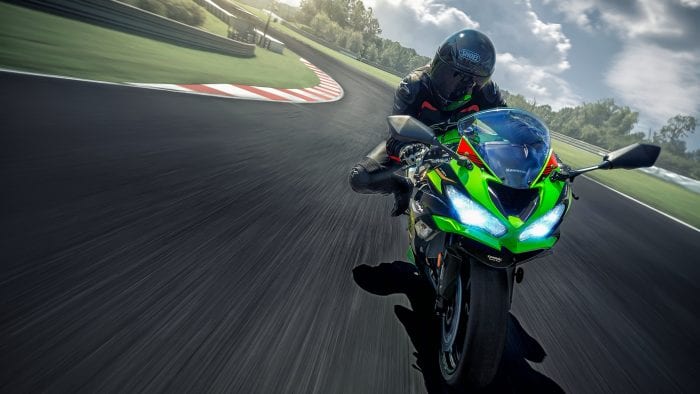


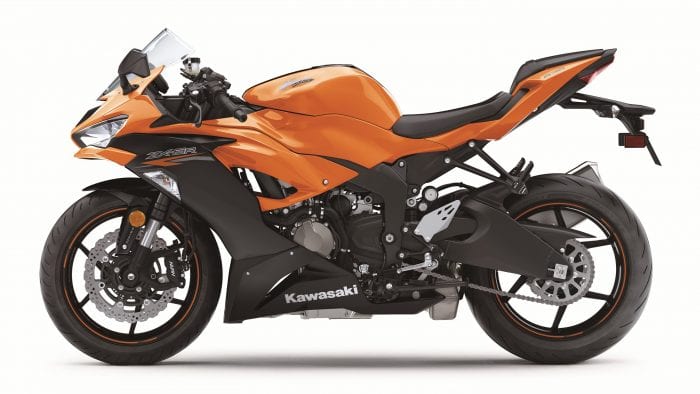
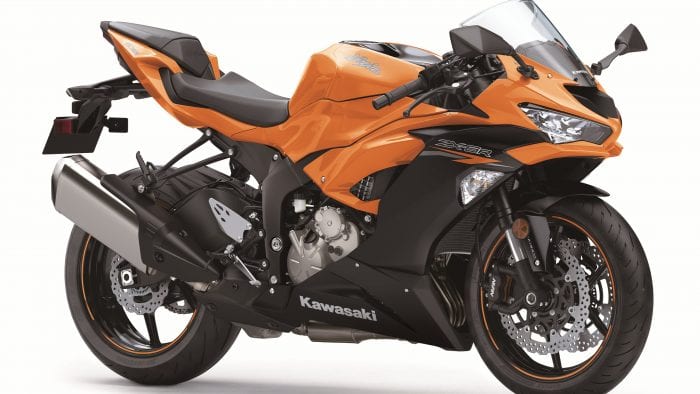
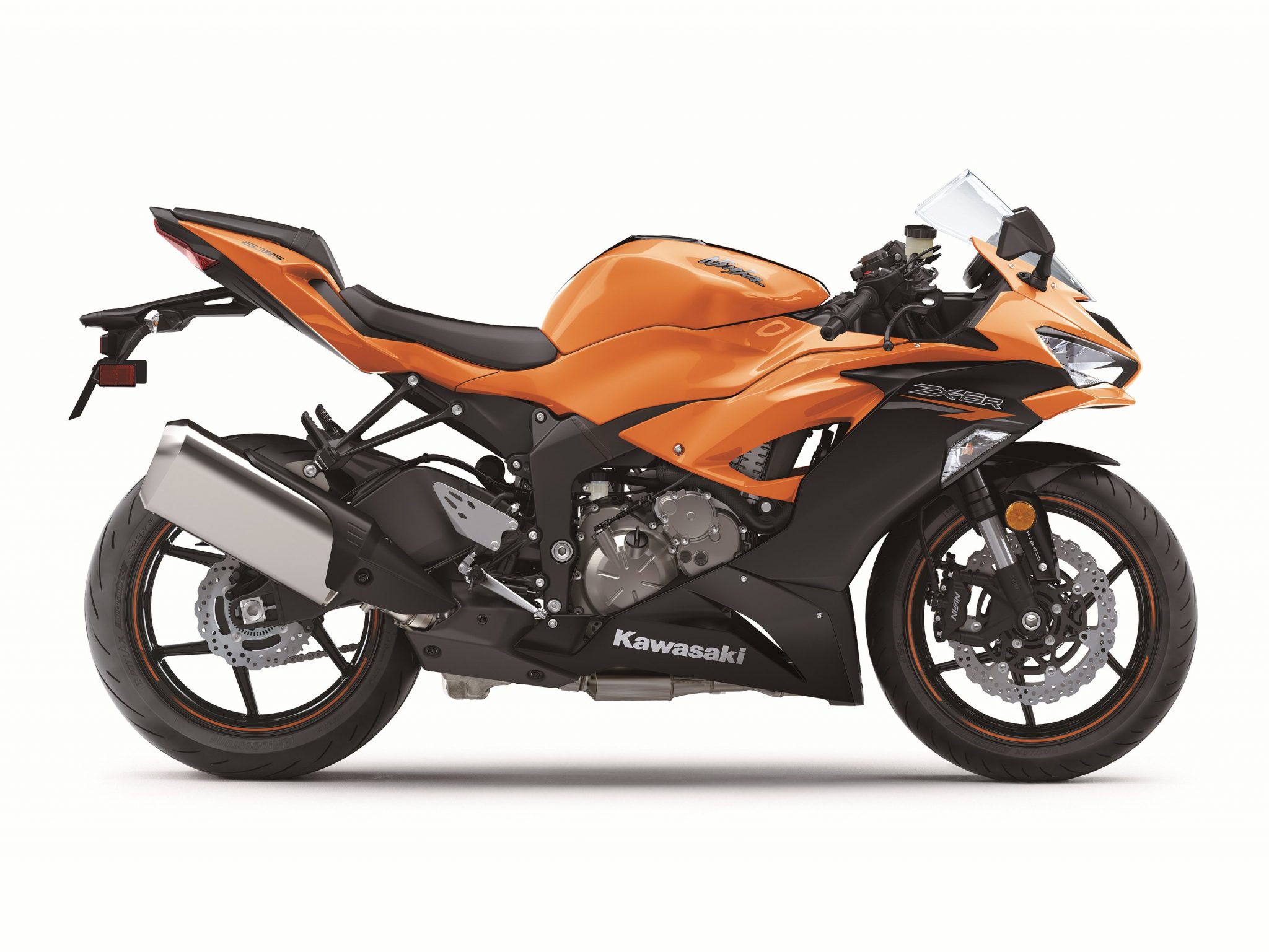

Didnt you think while riding the front end was quite noisey like wind rattling plastic
umm yea thats because it was. THANKS FOR YOUR THOUGHTS,,,,,,Rob KAWI SALES AT KAWI OF PA.